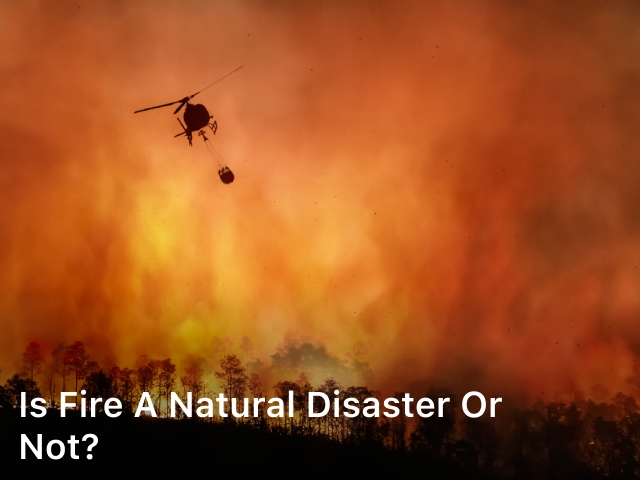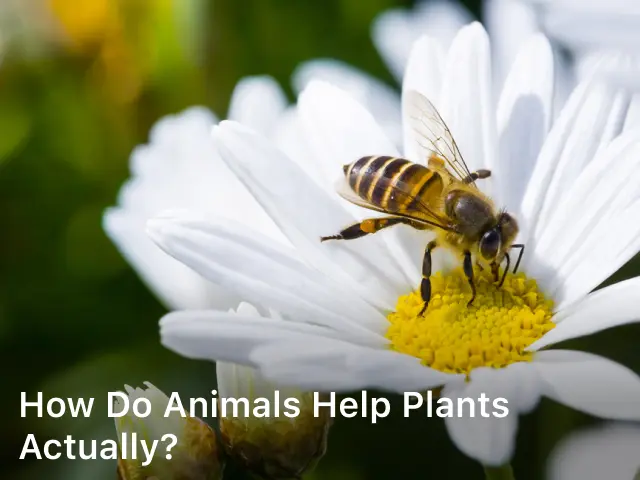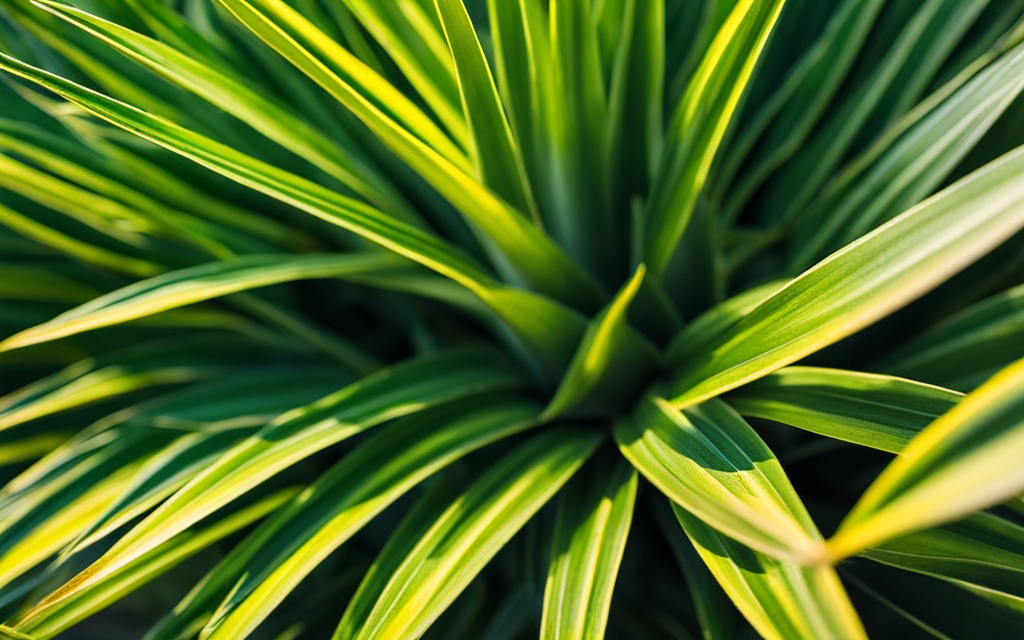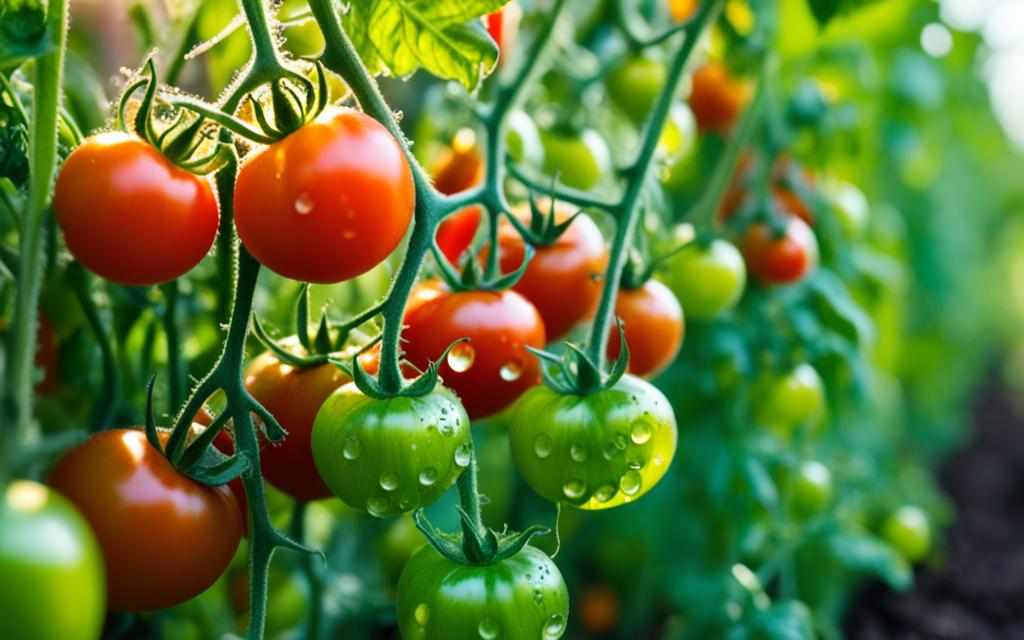How Animals Facilitates Pollination?
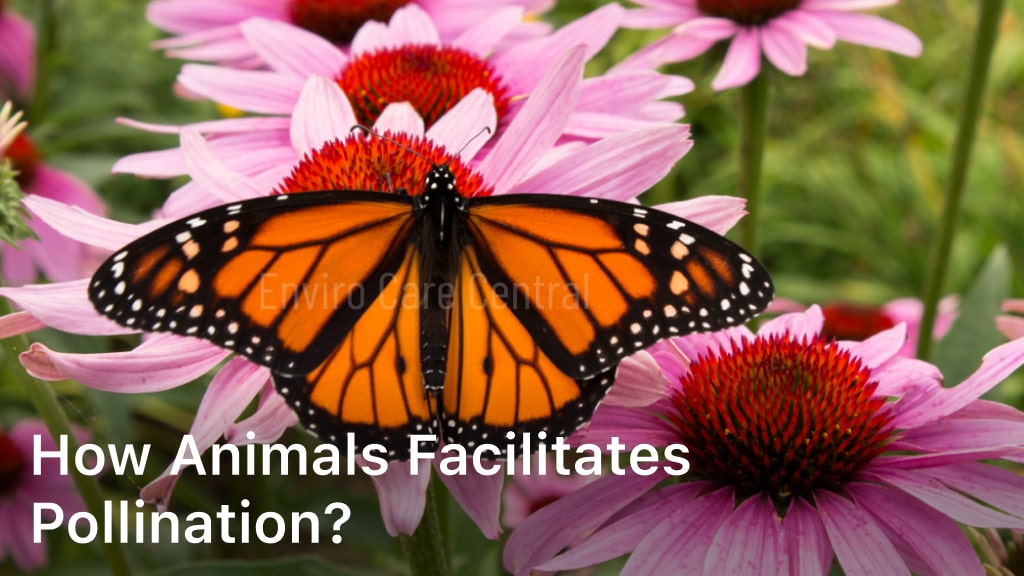
envirocarecentral.com. How Animals Facilitates Pollination? Explore the fascinating cycle of life as we delve into “How Animals Facilitates Pollination,” and their crucial role in sustaining our ecosystem.
As we explore the fascinating world of pollination, it becomes evident that animals play a critical role in this process. From bees and butterflies to birds and bats, animal pollinators are essential in sustaining the health of our ecosystem. Their actions contribute to the reproduction of plants, including crops that feed both wildlife and humans.
The pollination process involves the transfer of pollen from the male reproductive organ of a flower to the female reproductive organ, enabling the fertilization of the egg and resulting in the formation of seeds.
Without pollination, the reproduction of many plant species would be impossible, leading to devastating consequences for the ecosystem.
Animal-mediated pollination provides numerous benefits, including the creation of new genetic variants, ensuring the production of abundant and healthy crops, and maintaining biodiversity.
Understanding the role of animal pollinators in pollination mechanisms and the importance of preserving their habitats is crucial in ensuring environmental conservation and the sustainability of our ecosystem.
Key Takeaways
- Animals facilitates pollination and play a crucial role in the sustainability of the ecosystem.
- The pollination process entails the transfer of pollen, allowing for the reproduction of plants, including crops that feed wildlife and humans.
- Animal-mediated pollination contributes to creating new genetic variants, ensuring the production of abundant and healthy crops, and maintaining biodiversity.
- Understanding the importance of animal pollinators in pollination mechanisms and preserving their habitats is essential to environmental conservation and the sustainability of the ecosystem.
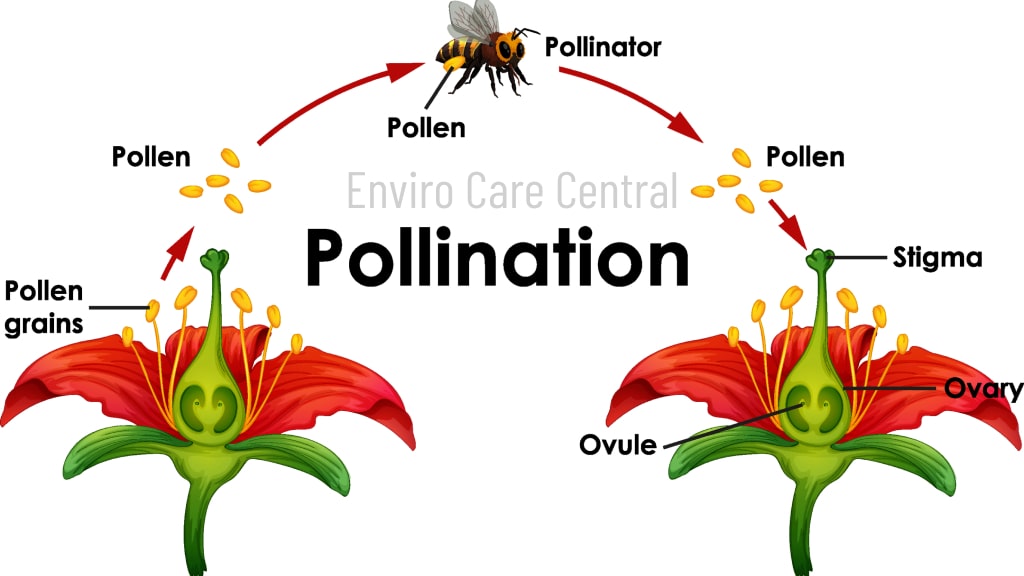
How Animals Facilitates Pollination
Animals play a crucial role in facilitating pollination, a process vital for the reproduction of many flowering plants. There are various mechanisms through which animals contribute to pollination:
1. Bees
- Bees are perhaps the most well-known pollinators. They are attracted to flowers by their vibrant colors and sweet nectar.
- As bees collect nectar for food, pollen from the flower’s male reproductive organ (anther) sticks to their bodies.
- When the bee visits another flower of the same species, some of this pollen is transferred to the female reproductive organ (stigma), facilitating fertilization.
2. Butterflies
- Butterflies are attracted to brightly colored flowers and are particularly active during the day.
- Similar to bees, butterflies transfer pollen as they feed on nectar. However, their long proboscis allows them to reach nectar in deep, tubular flowers.
3. Hummingbirds
- Hummingbirds are known for their ability to hover in front of flowers, using their long bills to reach nectar.
- As they feed, their heads come into contact with the flower’s reproductive structures, transferring pollen between flowers of the same species.
4. Birds
- Besides hummingbirds, other bird species also contribute to pollination.
- Some larger birds, like sunbirds and orioles, feed on flowers and inadvertently transfer pollen while doing so.
5. Bats
- In regions where bats are prevalent, they serve as important nocturnal pollinators.
- Bats are attracted to large, pale, and strong-scented flowers. As they feed on nectar, pollen adheres to their fur and is carried between flowers.
6. Beetles
- Some plants rely on beetles for pollination. Beetles are attracted to flowers with a strong scent and often dull colors.
- As they crawl over the flower, pollen is transferred between the plants.
7. Flies
- Certain fly species contribute to pollination, especially in plants that have a strong odor resembling that of rotting meat.
- These plants attract flies, which pick up and transfer pollen as they move between flowers.
The relationship between plants and their animal pollinators is often mutualistic, benefiting both parties. The plants receive assistance in reproduction, while the animals obtain a food source in the form of nectar.
This intricate web of interactions highlights the interconnectedness of ecosystems and the importance of biodiversity in maintaining the health of plant and animal populations.
Keep Reading : How Do Animals Help Plants Actually?
The Importance of Pollination
Pollination is a critical natural process that plays an essential role in plant reproduction. As plants depend on the movement of pollen grains, carried from male to female reproductive organs, to fertilize their ovules and produce seeds, pollinators help to facilitate this process and ensure successful plant reproduction.
Notably, pollination is vital to both the agricultural and ecological systems, as it contributes to food production for both humans and wildlife.
In agriculture, pollination helps to increase crop yields and improve the quality of fruits and vegetables, while in the wild, it enables the production of seeds and fruits that nourish wildlife and sustain entire ecosystems.
Without pollination, many plant species would become extinct, disrupting the balance of entire ecosystems and affecting food security.
Moreover, pollination serves as a vital measure of the health and sustainability of an ecosystem, indicating the presence and abundance of pollinators and the state of the environment.
Animal Pollinators
Animal pollinators play a vital role in transferring pollen between flowers, enabling plant reproduction and fruit and seed production. Some of the most common animal pollinators include bees, butterflies, birds, and bats, each with unique characteristics and pollination techniques.
| Animal Pollinator | Pollination Technique | Characteristic |
|---|---|---|
| Bees | Brushy hairs on their legs collect pollen | Most efficient pollinators |
| Butterflies | Long proboscis sips nectar from flowers | Diurnal pollinators with long-range foraging |
| Birds | Long beaks reach nectar at bottom of long-tubed flowers | Important pollinators for red, tubular flowers |
| Bats | Feed on night-blooming flowers with pungent odor | Nocturnal pollinators with long tongues and sharp teeth |
Bees are the most efficient pollinators due to their physical characteristics and behavior. They have brushy hairs on their legs that collect pollen as they move from flower to flower, transferring it to other plants. Butterflies, on the other hand, have a long proboscis that sips nectar from flowers and thereby transfer pollen.
Birds are attracted to red flowers and have long beaks that can reach the nectar at the bottom of long-tubed flowers. Bats feed on night-blooming flowers with a pungent odor and have long tongues and sharp teeth to extract the nectar. Each of these pollinator species serves a unique function in the pollination process.
Animal pollinators, like bees, also play a crucial role in agriculture, contributing to the production of various fruits and vegetables such as apples, almonds, and blueberries. Without animal pollinators, we would struggle to produce enough food to meet our needs.
Protecting and preserving animal pollinators is essential to maintaining ecosystem balance and ensuring the sustainability of our planet.
By understanding the unique characteristics and pollination techniques of different animal pollinators, we can better appreciate their critical role and make informed choices to support their habitats and populations.
Mutualistic Relationships
In this section, we will focus on the fascinating relationship between plants and animals, which has evolved over millions of years, leading to an intricate web of interactions that benefit both parties. This mutually beneficial relationship is known as mutualism, and it is vital in facilitating the pollination process.
The Basics of Mutualistic Relationships
Mutualism is a type of symbiosis, where two different species benefit from each other’s presence. In the case of pollination, plants provide animals with food, while animals help plants reproduce by spreading their pollen.
This interdependence has led to the evolution of various adaptations, where both plants and animals have developed traits that enable efficient pollination.
“Mutualism is a foundation for many ecosystems, where plants and animals are interconnected in ways that contribute to the sustainability of life on earth.”
The Role of Coevolution in Mutualistic Relationships
Coevolution occurs when two or more species reciprocally influence each other’s evolution. In plant-animal interactions, this means that as plants develop new adaptations to attract animal pollinators, animals also evolve traits to better gather the rewards provided by plants.
These interactions can include changes in color, shape, scent, or nectar production, leading to unique plant-animal interactions that differ from one ecosystem to another.
Diversity in Plant-Animal Interactions
There are over 200,000 species of plants in the world, and each of them interacts with a variety of animal pollinators. A single plant species can attract several types of animals, and in turn, a single animal species can pollinate various types of plants.
This diversity in plant-animal interactions suggests that there are multiple ways to achieve successful pollination, and the interdependence between plants and animals is critical in conserving biodiversity in ecosystems.
Keep Reading : How Plants Can Clean up the Mess Human Make?
Pollination Mechanisms
Animal pollination involves a complex interplay between plants and animals, where animals transfer pollen between flowers, resulting in successful fertilization and subsequent fruit and seed production. Pollination mechanisms can vary depending on the animal species involved, but they generally involve flower structures and pollen transfer.
Flower Structures
Flowers have evolved intricate structures to attract animal pollinators. Bright colors, such as red, yellow, and blue, serve as visual attractants, while sweet nectar and strong fragrances attract animals through taste and smell.
Additionally, flower structures such as long tubes or deep corollas may be adapted to accommodate specific pollinators. For example, hummingbirds are attracted to tubular flowers that allow them to hover and feed on nectar.
Pollen Transfer
Pollen transfer occurs through a variety of means, such as adhesion to the animal’s body or hairs, or being ingested and carried in the digestive tract. Once the animal visits another flower, the transferred pollen grains can fertilize the flower’s ovules and produce seeds.
The effectiveness of pollen transfer can be influenced by several factors, such as the animal’s mobility and behavior, the availability of suitable flowers, and the environmental conditions. For example, bees are efficient pollinators due to their foraging behavior and ability to carry large amounts of pollen on their bodies.
Understanding pollination mechanisms is crucial for the conservation of animal pollinators and the plants they support. By protecting habitats and promoting diversity in plant and animal communities, we can ensure the continued success of pollination processes and sustain healthy ecosystems.
Keep Reading : How do Plants and Animals Depend on Each Other
Role of Animal Vision and Senses
When it comes to pollination, animal vision and sensory perception play a critical role. Many animals, such as bees and butterflies, have highly specialized vision that allows them to detect ultraviolet light and see colors that human eyes cannot perceive. These visual abilities enable them to navigate towards flowers that have unique color patterns and markings specifically designed to attract them.
However, it’s not just color that attracts pollinators. Scent is also an essential factor. Some flowers emit scents that mimic pheromones, which lure insects such as bees and wasps.
The shape and texture of petals and other flower structures also play a role in pollinator attraction, providing landing platforms and nectar guides.
Attractants
Attractants are chemical compounds that plants produce to entice pollinators. Some attractants have a sweet smell, such as the nectar produced by various flowers. Other attractants have more complex scents, which some insects, such as flies and beetles, are attracted to.
The production of attractants is a highly specialized process and is often tightly regulated by the plant. In many cases, the production of attractants is synchronized with the time of day when the pollinators are most active. For example, certain flowers only release their scent at night to attract nocturnal pollinators such as moths and bats.
Understanding the sensory perception of pollinators is crucial in designing effective conservation and management strategies for both wild and cultivated plants.
By creating environments that are attractive to pollinators, we can help support their populations and ensure the continued pollination of plants that we depend on for food and other resources.
Ecological Implications
Animal-mediated pollination has far-reaching ecological implications, playing a crucial role in maintaining biodiversity and preserving habitats for both plants and animals.
The loss of animal pollinators can lead to a decline in plant populations, affecting the food sources and habitats of other animal species, ultimately destabilizing entire ecosystems.
This highlights the need for careful ecosystem management, including conservation efforts aimed at protecting pollinator populations and their habitats.
“The disappearance of pollinators would have disastrous consequences, not only for flowers, but more importantly, for the entire human race.” – Albert Einstein
One of the most significant ecological impacts of animal pollination is the preservation of genetic diversity within plant populations. This diversity increases the resilience of plants to environmental stresses, such as climate change, which can have catastrophic consequences for both animal and plant populations.
Additionally, the genetic diversity of plant populations helps sustain food production and enhances the resilience of agricultural systems.
Biodiversity is essential for maintaining stable ecosystems and providing the necessary resources for human well-being. Animal pollinators play a critical role in this process by facilitating the reproduction and survival of plant species, which in turn support diverse animal communities.
Preservation of Habitats
Preserving the habitats of animal pollinators is crucial in maintaining their populations and supporting the ecosystem services they provide. Habitat degradation and fragmentation, caused by climate change, deforestation, and land-use changes, pose a significant threat to pollinator populations worldwide.
Conservation efforts aimed at preserving pollinator habitats include the restoration of degraded areas, the creation of corridors to connect isolated habitats, and the implementation of sustainable land-use practices.
These efforts contribute to the preservation of essential habitats for animal pollinators and help maintain the ecological integrity of our planet.
Conclusion
In summary, we have explored the crucial role played by animal pollinators in maintaining ecosystem balance and the sustainability of our planet.
From bees and butterflies to birds and bats, these fascinating creatures serve as essential partners in the pollination process, enabling plant reproduction and facilitating food production for both humans and wildlife.
It is clear that the loss of animal pollinators would have a significant impact on our ecosystems, leading to decreased biodiversity and threatening the delicate balance of our environment.
Therefore, it is imperative that we take proactive measures to protect these vital species and their habitats, including promoting environmental conservation efforts and supporting policies that prioritize the preservation of natural resources.
As we continue to learn more about the intricate interactions between plants and animals, we gain an even deeper appreciation for the importance of these mutualistic relationships and the role they play in shaping our world. By working together to protect animal pollinators, we can ensure a sustainable future for both our planet and future generations.
FAQ
How Animals Facilitates Pollination?
Animals facilitates pollination by transferring pollen from the male parts of a flower to the female parts of another flower, allowing for fertilization and the production of seeds. This transfer of pollen can occur through various means, such as bees collecting pollen on their bodies or birds carrying pollen on their beaks.
What is the importance of pollination?
Pollination is crucial for plant reproduction and plays a significant role in ensuring food production. Through pollination, plants are able to reproduce and produce fruits, vegetables, and seeds that are essential for both human and wildlife consumption.
Which animals are important pollinators?
Animals such as bees, butterflies, birds, and bats are important pollinators. Bees are the most well-known and efficient pollinators, while butterflies and birds also contribute to the pollination of many plant species. Bats, particularly in tropical regions, play a vital role in pollinating night-blooming plants.
What are mutualistic relationships in plant-animal interactions?
Mutualistic relationships refer to interactions between plants and animals that are mutually beneficial. In the case of pollination, plants provide animals with nectar or other rewards, while animals transfer pollen between flowers, aiding in the plant’s reproduction. This coevolutionary relationship has evolved over time and benefits both parties.
What are the different pollination mechanisms employed by animals?
Animals employ various pollination mechanisms, including flower structures and pollen transfer. Flower structures, such as color, shape, and scent, attract animals to flowers. Pollen transfer occurs when animals inadvertently pick up pollen on their bodies and transfer it to other flowers as they move between them.
How do animal vision and senses contribute to pollination?
Animal vision and senses play a crucial role in pollination. Animals are attracted to flowers based on factors such as color, shape, scent, and other attractants. These visual and sensory cues help animals locate and interact with flowers, facilitating the transfer of pollen and promoting pollination.
What are the ecological implications of animal-mediated pollination?
Animal-mediated pollination has broad ecological implications. It is essential for maintaining biodiversity, as many plant species depend on animal pollinators for reproduction. Additionally, the preservation of habitats that support animal pollinators is vital to ensuring their continued pollination services and the overall health of ecosystems.
Why is it important to conserve animal pollinators?
Animal pollinators play a significant role in maintaining the balance of ecosystems. By helping plants reproduce, they contribute to the overall health and sustainability of our environment. Conserving animal pollinators is essential for preserving biodiversity, supporting food production, and ensuring the long-term ecological well-being of our planet.

